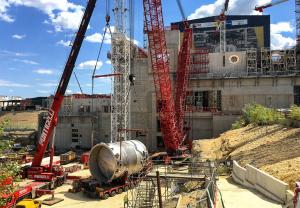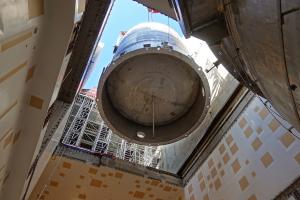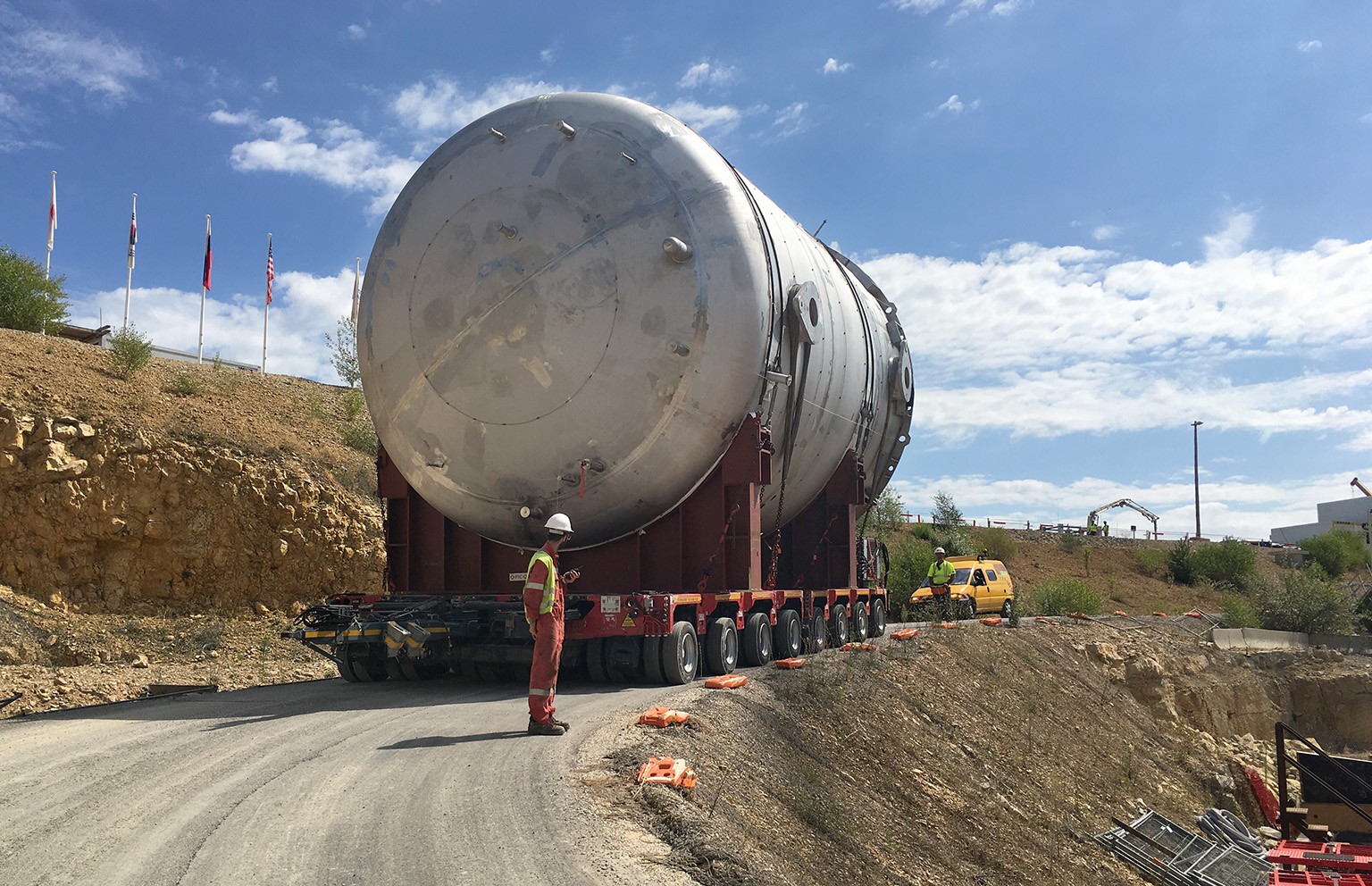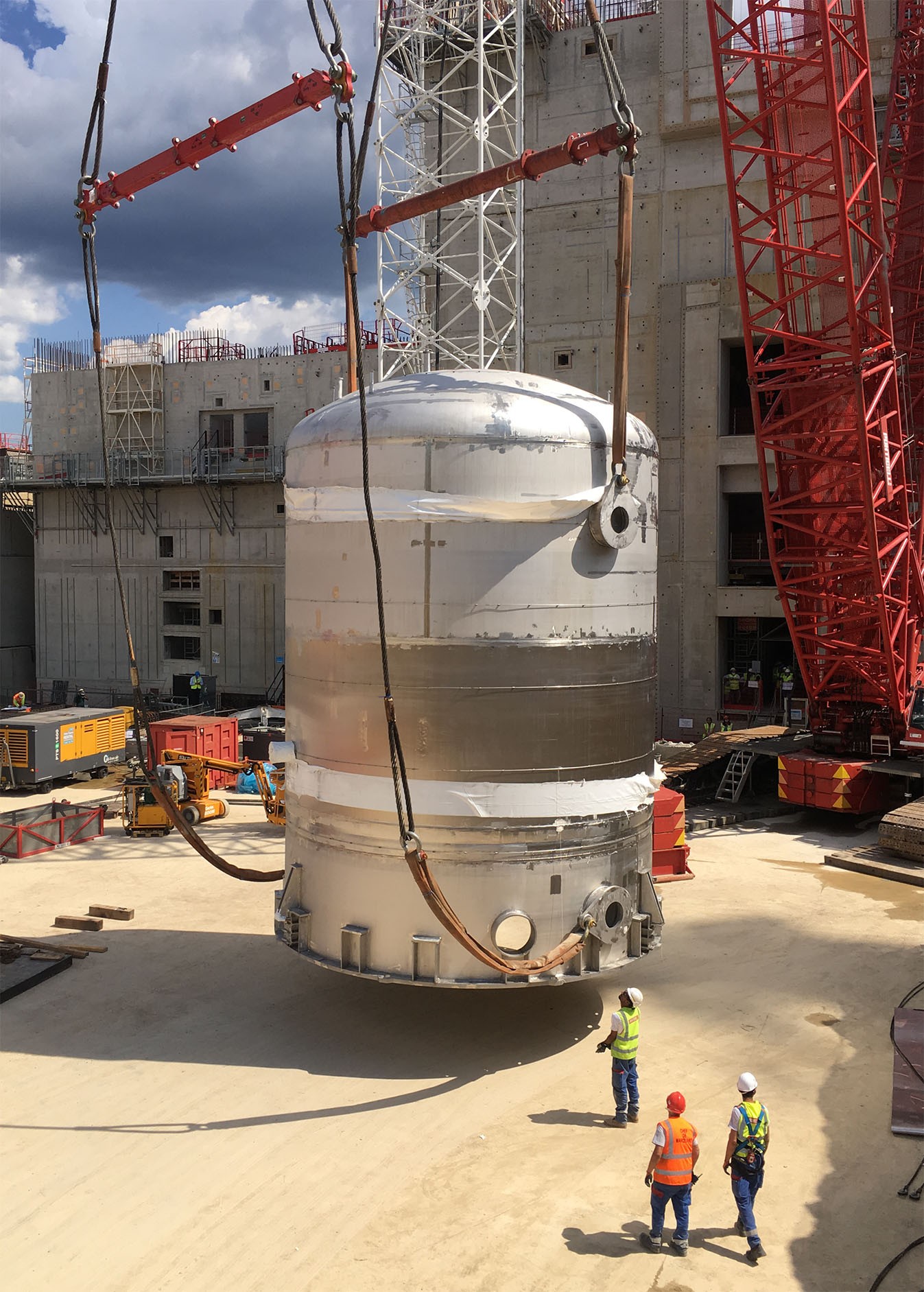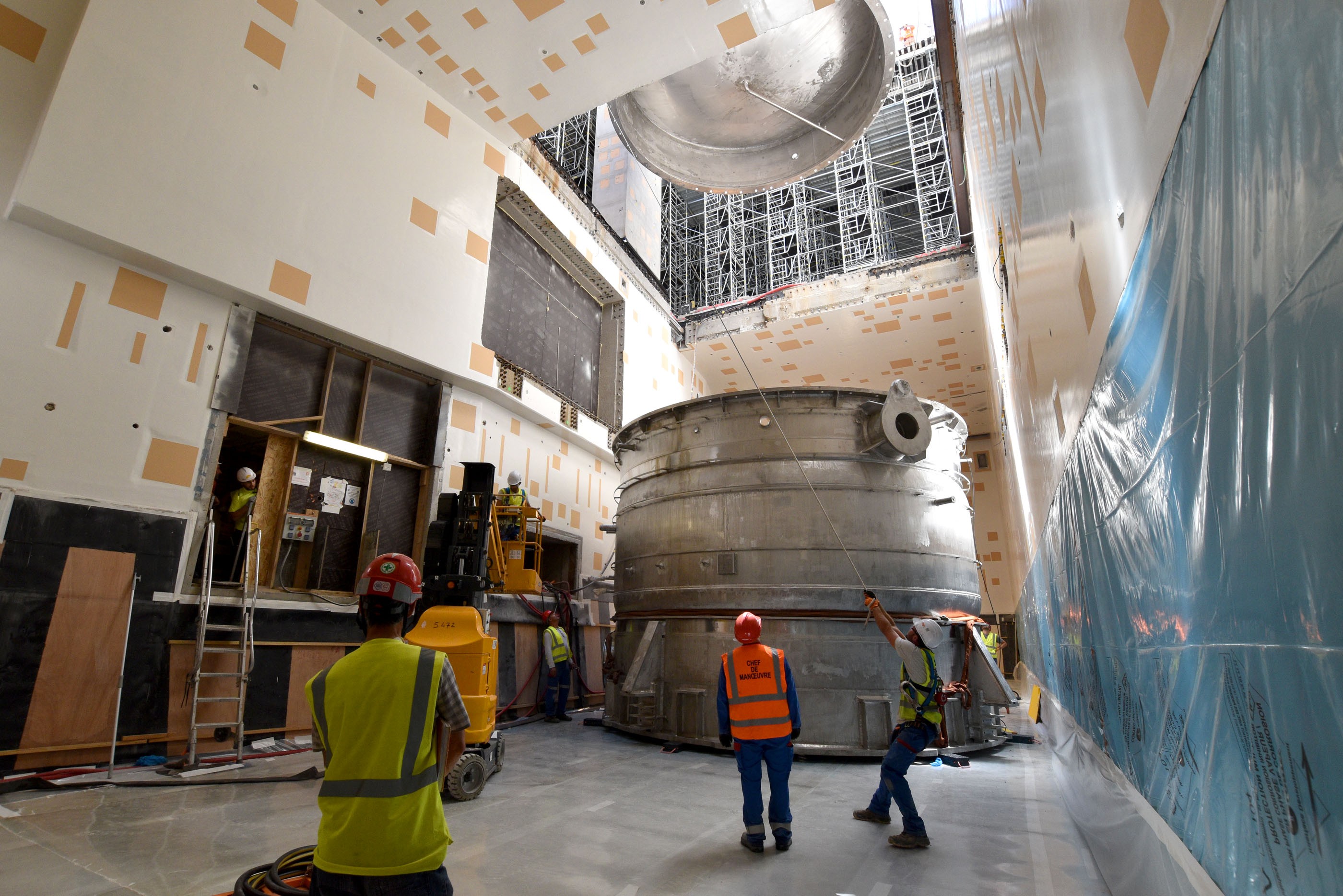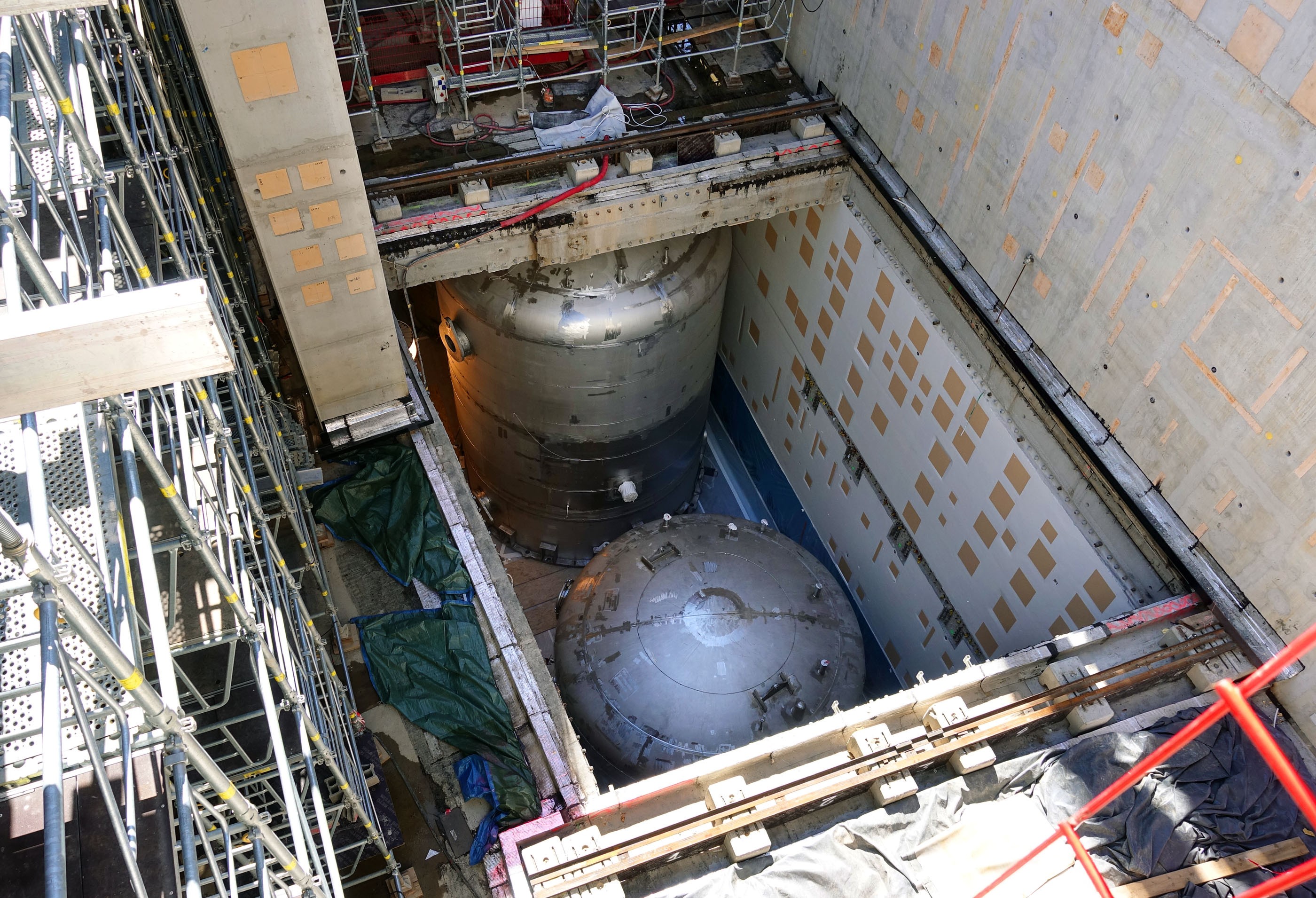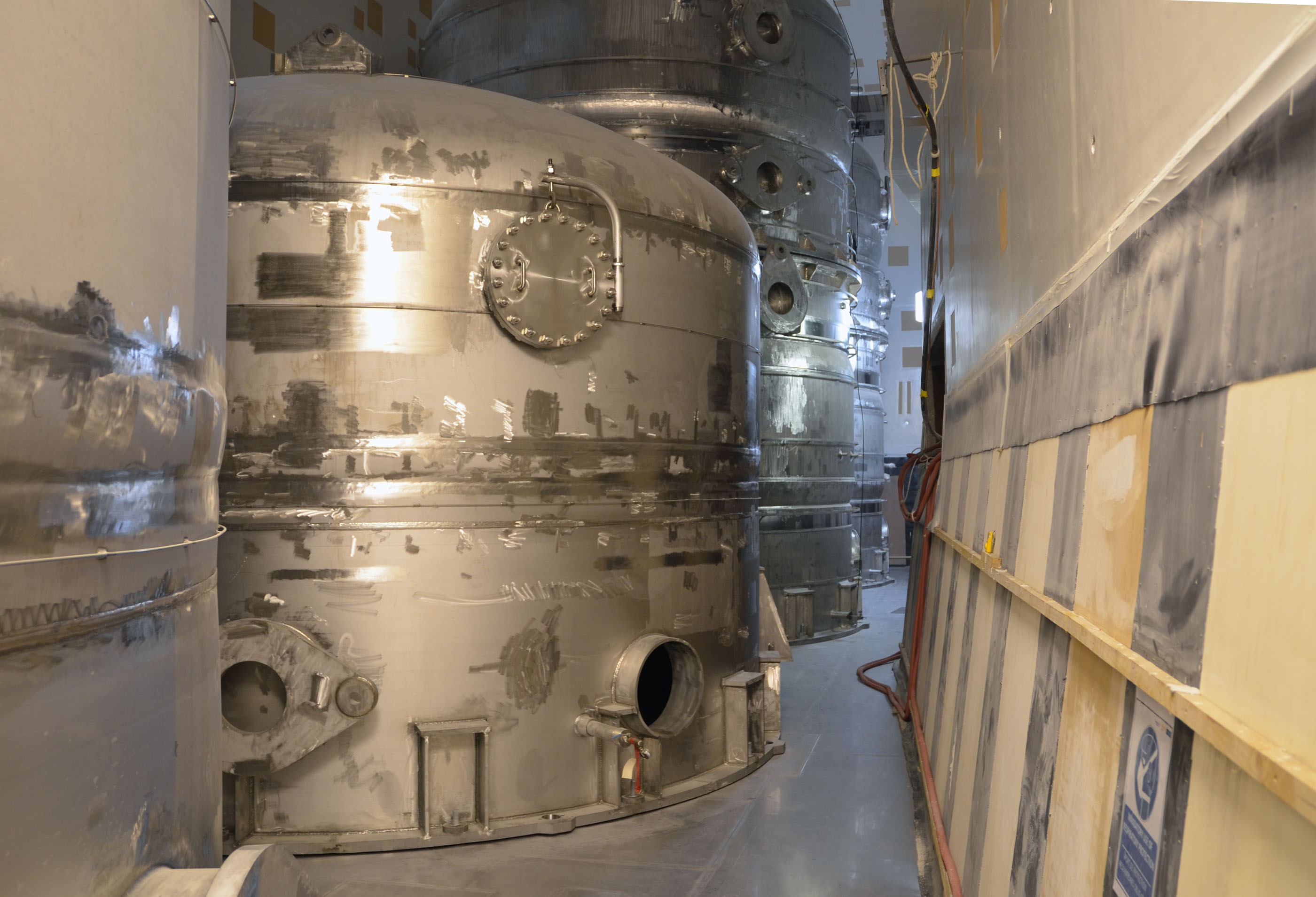The
drain tank room, 40 metres long, 15 metres wide, and 11 metres high, was designed to house seven containers with volumes ranging from 100 to 210 cubic metres: three drain tanks to support normal operation, maintenance and water collection following an accident in the machine; and four vapour suppression tanks to protect the vacuum vessel against overpressure in the case of a "loss of coolant accident" in the vacuum chamber.
With its leak-tight floor and lower-wall lining, the room acts like a "drip pan." In the improbable case of a leakage from any of the tanks, the contaminated water would remain contained within. In a way, the drain tank room is itself a tank.
The installation of the seven tanks, an operation that began on 14 August, was the most spectacular installation activity performed as yet in the Tokamak Complex.
The very nature of the tanks—classified within French safety regulations as nuclear pressure equipment (ESPN)—required the implementation of special procedures and control points for validation at every step: from transport out of storage, to lifting and handling, and finally to transfer on air pads to the final positions in the room.

